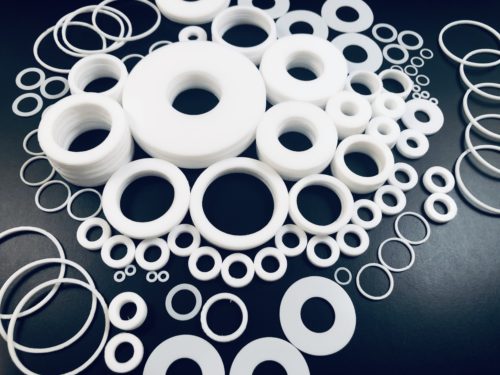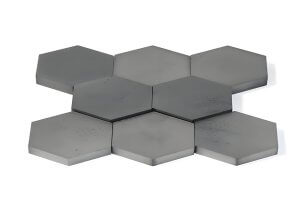Plastic manufacturing involves the process of converting plastic raw materials into final products through various techniques. These techniques range from simple cutting and shaping to more complex processes like injection molding, extrusion, blow molding, rotational molding, and more. The choice of plastic manufacturing process depends on the product design, the type of plastic used, production volume, and the final application. The versatility of plastics makes them widely used across various industries, from consumer goods to aerospace, medical, and construction sectors.
Injection Molding
Injection molding is a widely used plastic manufacturing process, especially suitable for producing large quantities of complex and highly precise parts. This process involves heating thermoplastic pellets until they melt, and then injecting the molten plastic into a mold under high pressure. After the plastic cools and solidifies in the mold, the desired shape of the plastic part is obtained. The advantages of injection molding lie in its high production efficiency, making it ideal for mass production. Additionally, injection molding allows for precise control of part dimensions, making it suitable for manufacturing high-precision components.
During the injection molding process, molds are typically made of aluminum or steel. Aluminum molds have higher thermal conductivity and do not require cooling channels, making them ideal for small-batch production. Steel molds, on the other hand, are more durable and suitable for high-volume production. The injection molding process includes six main steps: clamping, injection, holding, cooling, mold opening, and part ejection.
Other Plastic Manufacturing Processes
In addition to injection molding, there are various other plastic manufacturing processes, each with its unique applications, advantages, and disadvantages.
- Extrusion Molding
Extrusion molding is a continuous plastic forming process that involves pushing molten plastic material through a die to create a continuous profile, such as pipes, sheets, or profiles. Extrusion molding is suitable for high-volume production and can produce products with uniform properties and high surface finish. - Blow Molding
Blow molding is a process used to produce hollow plastic parts such as bottles, containers, and fuel tanks. This process involves inflating heated plastic parisons inside a mold until the plastic conforms to the shape of the mold cavity. Blow molding can be divided into extrusion blow molding, injection blow molding, and stretch blow molding. - Rotational Molding
Rotational molding, also known as rotomolding, is a process used for manufacturing large hollow parts. This process involves placing plastic powder inside a heated rotating mold, allowing the plastic to melt and evenly coat the inside surface of the mold, ultimately forming the desired part. Rotational molding is suitable for producing products like canoes, automotive parts, toys, and storage tanks. - Vacuum Casting
Vacuum casting is a process suitable for small-batch production, often used for creating high-precision prototypes and functional parts. In vacuum casting, plastic material is injected into a silicone mold under vacuum conditions, ensuring bubble-free and smooth surface parts. Vacuum casting is particularly effective for producing parts with complex geometries. - Thermoforming
Thermoforming is a process that involves heating a plastic sheet to a pliable temperature and then forming it over a mold using vacuum or pressure. Thermoforming is commonly used to produce food packaging, disposable cups, aircraft windshields, and more. - Plastic Welding
Plastic welding involves heating plastic materials at the joint area until they melt and bond together as they cool. Plastic welding is suitable for joining large parts, such as chemical processing components and pipelines. Common plastic welding methods include ultrasonic welding, hot plate welding, and vibration welding. - CNC Plastic Machining
CNC machining is a process that uses CNC equipment to precisely remove material from plastic workpieces, creating high-precision parts with complex geometries. CNC machining is suitable for prototyping, small-batch production, and creating parts with tight tolerances and smooth surface finishes. - 3D Printing
3D printing is a process that builds plastic parts layer by layer, making it ideal for custom prototypes and small-batch production. 3D printing offers design flexibility and fast production, making it suitable for creating complex shapes and detailed parts.
Applications of Plastic Materials
Plastic materials have a wide range of applications across various industries. Here are some major application areas of plastic manufacturing:
- Aerospace Industry: High-performance plastics such as ABS, nylon, and PEEK are used to manufacture lightweight and durable aerospace components, such as seat parts, interior panels, and fuel hoses. The lightweight properties of plastics help improve aircraft fuel efficiency and enhance structural safety.
- Automotive Industry: Plastics play a significant role in automotive manufacturing, widely used in body panels, dashboards, bumpers, and fuel tanks. The lightweight nature of plastics helps reduce the overall weight of vehicles, improving fuel efficiency.
- Electronics Industry: Plastics are widely used in electronics manufacturing due to their excellent electrical insulation and durability. They are commonly used in the production of electronic product housings, keyboard keys, and printed circuit boards, providing protection to electronic components from environmental factors and extending product life.
- Medical Industry: Plastics have extensive applications in the medical field, used in manufacturing surgical instruments, syringes, catheters, and medical device housings. Biocompatible plastics such as polycarbonate and polypropylene meet the high standards of sterility and durability required in the medical industry.
- Construction Industry: Plastics are widely used in construction materials due to their weather resistance, corrosion resistance, and lightweight properties. Common applications include plumbing systems, window frames, wall panels, and roofing membranes. The ease of processing plastics allows them to meet various architectural design needs.
- Consumer Goods: In our daily lives, plastic products are ubiquitous, ranging from water bottles, plastic bags, and toys to kitchenware and furniture. Plastics are favored for consumer goods due to their low cost, lightweight, and durability.
Advantages and Disadvantages of Plastic Manufacturing
Plastic manufacturing processes offer great flexibility, allowing the production of complex shapes and structures with significant advantages in cost, weight, and durability. However, plastic manufacturing also faces challenges such as environmental impact, poor thermal stability, and lower strength compared to metals.
- Advantages:
- Processability and Formability: Plastics are easy to process, and their low melting point makes molding and casting processes more convenient, enhancing production efficiency.
- Customizable Production: Plastic materials can be customized in terms of color, texture, and other properties to suit various specific applications.
- Cost-Effective: Whether for prototyping or mass production, the production cost of plastic parts is generally lower than that of metal or other materials.
- Lightweight: Plastics are widely used due to their lightweight nature, which enhances the performance of final products in industries like automotive and aerospace.
- Durability: Plastics offer excellent corrosion resistance and wear resistance, ensuring long service life in harsh environments.
- Realization of Complex Designs: Plastic manufacturing techniques can turn complex designs into practical products, meeting diverse market demands.
- Disadvantages:
- Environmental Issues: Plastics are non-biodegradable, posing risks of environmental pollution and a high carbon footprint during production.
- Poor Thermal Stability: Plastics lose strength and hardness at high temperatures, limiting their use in high-temperature environments.
- Lower Strength: Compared to metals, plastics have lower mechanical strength and may not perform as well in applications requiring high strength.
How to Choose the Right Plastic Manufacturing Technique?
When choosing a plastic manufacturing technique, it is important to consider the following factors:
- Type of Plastic: Different plastic materials are suitable for different manufacturing processes. For example, injection molding is typically used for thermoplastics, while certain plastic welding processes may be better suited for specific types of plastic.
- Part Shape and Size: Complex geometries may be more suitable for injection molding or CNC machining, while simple continuous profiles may be better suited for extrusion molding.
- Precision Requirements: Applications requiring high precision can choose CNC machining or 3D printing, while lower precision requirements for mass production can opt for injection molding or rotational molding.
- Production Volume and Cost: Injection molding has a higher initial cost but is suitable for high-volume production, while small-batch production can choose lower-cost CNC machining or 3D printing.
- Lead Time: If quick delivery is needed, small-batch production can choose CNC machining or 3D printing, while mass production may require more time for mold design and manufacturing.
Conclusion
Plastic manufacturing techniques encompass a wide range of processes, from simple cutting and shaping to complex injection molding, extrusion, and 3D printing. Each technique has its unique application scenarios. Choosing the right manufacturing technique can significantly improve production efficiency, reduce costs, and ensure high-quality output. In the future, as technology continues to advance, plastic manufacturing processes will continue to evolve, meeting the growing demands of various industries.
Other Articles You Might Enjoy
- Plastic Injection Molding in Medical Manufacturing: Advantages & Disadvantages
Plastic injection molding is used to make many medical products. This manufacturing process is proven reliable and can produce large quantities at low costs per part. Injection molding allows for…
- Low Volume Plastic Injection Molding: An In-Depth Guide
Low volume plastic injection molding is a manufacturing process used to produce small quantities of intricate plastic parts. This technique is essential in industries requiring unique, high-quality plastic components in…
- Silicone vs. Plastic Injection Molding: Which Material Fits Your Product Best?
Introduction to Injection Molding In the manufacturing industry, injection molding is a commonly used technique. It is a process where material, either silicone or plastic, is heated until it melts…
- Silicone vs. Plastic Injection Molding: Which Material Fits Your Product Best?
Silicone vs. Plastic Injection Molding: An Overview Injection molding is a widely used method to produce parts from both silicone and plastic materials. To briefly elucidate, silicone injection molding involves…
- Finishing Options for Injection-Molding
Factors that impact the injection molding surface finish The best way to control the texture of plastic parts is to treat them with a specific finishing process. There are steps…
- Best Wall Thickness for Injection Molding
Injection molding has been the dominant method of consumer manufacturing since the 1950s. It is responsible for everything, from action figures to denture boxes. Injection molding is versatile, but there…






